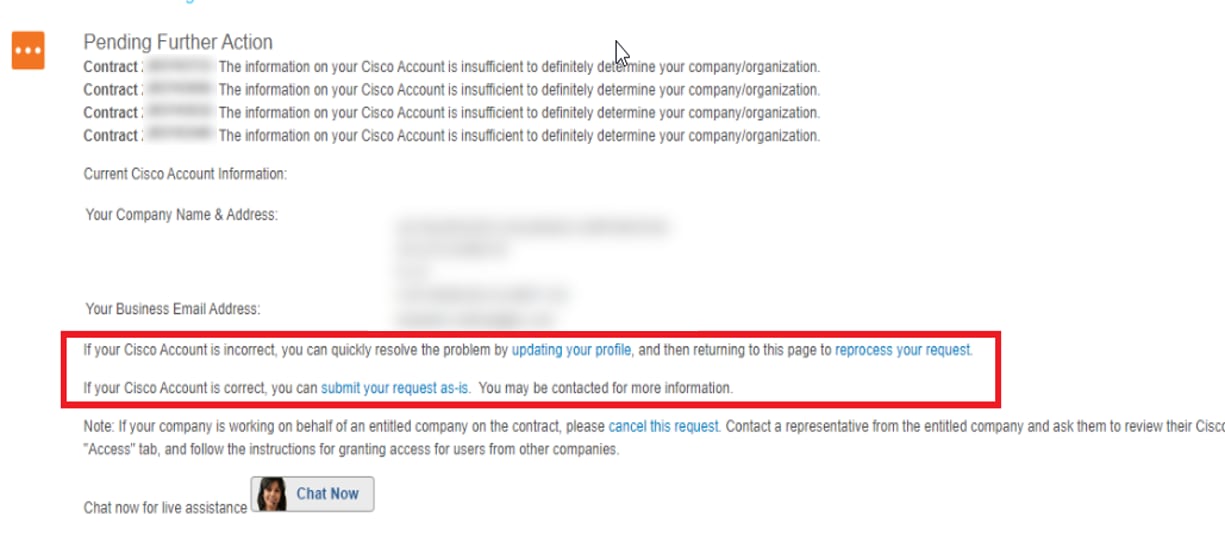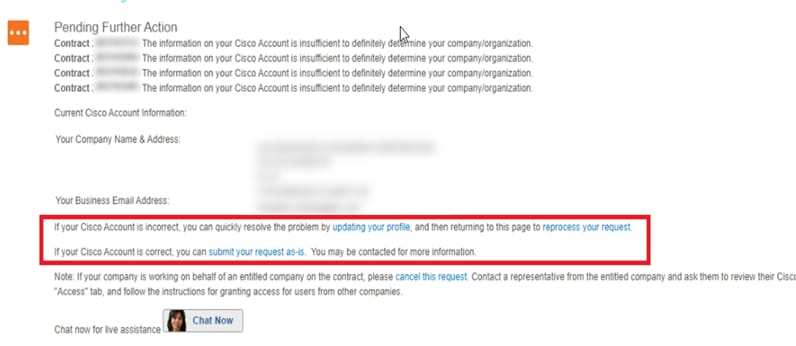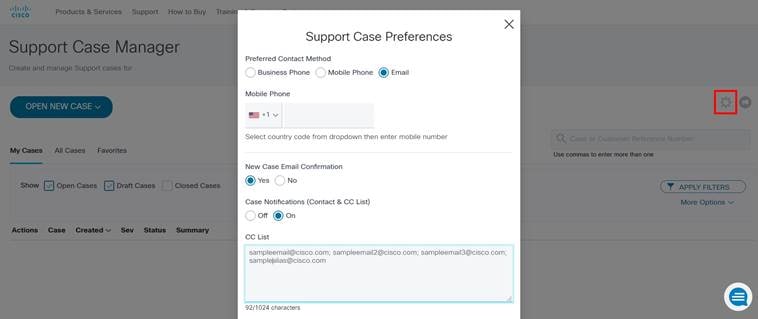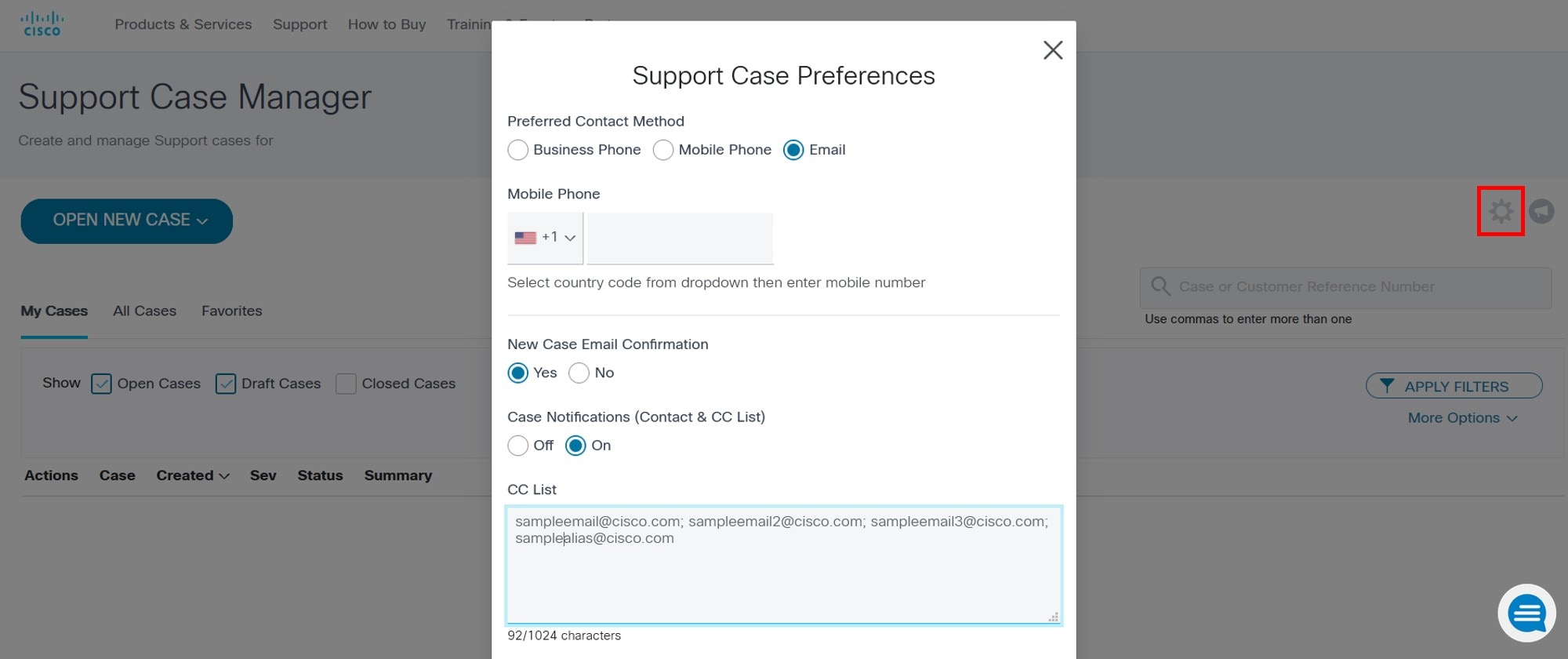Introduction
This document provides answers to some of the most common questions regarding service offer integration, and technical support and delivery for Cisco BroadWorks and legacy BroadSoft products.
Product and service offer integration
Q. How are the existing BroadSoft products being mapped into the Cisco portfolio?
A. Table 1 shows how the BroadSoft products are being mapped at Cisco.
Table 1. Mapping of BroadSoft products to Cisco products
| BroadSoft Product Name |
Cisco Product Name |
| BroadWorks |
Cisco BroadWorks |
Q. How are the BroadSoft services being mapped into Cisco Customer Experience offers?
A. BroadSoft services are being mapped to Cisco Customer Experience offers as shown in Table 2.
Table 2. Mapping of BroadSoft services to Cisco services
| BroadSoft Service Offer |
Cisco Services |
| Technical Services |
| BroadWorks Maintenance and Support |
Software Support for Cisco BroadWorks |
| Professional Services |
| BroadSoft ProServices |
Cisco BroadWorks Advise and Implement Services |
Cisco technical services
Software Support for Cisco BroadWorks
Q. What is Software Support for Cisco BroadWorks?
A. As part of the Cisco Technical Support Services portfolio, the Software Support for Cisco BroadWorks provides maintenance and minor updates, access to online resources and Cisco Technical Assistance Center (TAC) support services, plus major software application upgrades. Upgrades provide a richer feature set and improved performance and efficiency. Embedded support helps maximize business outcomes, protects the customer’s investment, and provides round-the-clock coverage from highly-skilled engineers.
Q. What is included with Software Support for Cisco BroadWorks?
A. Software Support for Cisco BroadWorks offers foundational software application support for the full term of the purchased software, including:
● 24x7 access to Cisco Technical Assistance Center (TAC) support
● Maintenance, minor and major software release updates
● Anytime online support tools and community
A. New releases are announced in product bulletins that are available through the
Cisco Notification Service. This service allows you to create customized, flexible notification alerts, which can be sent to you by email or RSS feed, on critical product support subjects: Security Advisories, Field Notices, End of Sale/Support statements, Software Updates, and Known Bugs.
A. Updates to the Cisco BroadWorks software is available via
Cisco Software Download Center. All customers gain access to these updates with the software support contract.
Cisco advanced services transactional
Q. What are Cisco advanced services transactional offers?
A. Cisco advanced services transactional (AS-T) offers are custom scoped and priced and written on a statement of work (SOW). The SOW is used to define limitations of liability, characteristics of delivery, payment terms, and other provisions.
Q. What Cisco advanced services transactional offers for Cisco BroadWorks are available?
A. Cisco BroadWorks Advise and Implement service is the AS-T offer that is available.
Q. What is Cisco BroadWorks Advise and Implement service?
A.
Designed for service providers that own and operate Cloud/Hosted/Premise BroadWorks deployments, Cisco Advise and Implement Service includes design, deployment, upgrades, patching, migrations, audits, strategic planning, and custom tooling.
Q. How are the services delivered?
A. Services are delivered both remotely and onsite to the customer.
Q. How can customers purchase the AS-T offers?
A. BroadWorks Professional Services is ordered using Cisco-standard tools, templates, and processes. Customers may purchase Cisco advanced services transactional offers by working with their Cisco account manager, who will then engage a Cisco Business Development Manager.
Q. What changes will customers and partners experience as a result of the shift to Cisco tools and processes?
A. When purchasing BroadWorks professional services, customer and partners will note the following changes:
● Quote format (Cisco standard)
● Statement of Work (SOW) format (Cisco standard)
● Invoice format (Cisco standard)
● Requirement to sign the SOW – either via DocuSign or manually
● Requirement to email the corresponding Purchase Order (PO) to their Cisco Sales representative instead of to the previous alias
Q. How will customers and partners access support for professional day 2 services after transitioning to Cisco?
A. Customers and partners that currently open cases for day 2 services in the BroadSoft Xchange portal will access Digital CX support using Cisco TAC tools and processes. Customers and partners can open a case with Cisco TAC online through Support Case Manager, by email, and over the phone.
Service contract migration and renewals
Q. When will legacy BroadSoft maintenance agreements be migrated to Cisco’s installed base?
A. Maintenance agreement contract migration for active agreements will happen in 2 phases. Cisco Customer Experience will send email communications to you after your data has been migrated.
Q. How many service contract numbers will I receive?
A. Customers and partners will receive contract numbers based on the product lines they own with an active service agreement at BroadSoft.
Q. How are service agreements renewed?
A. Following migration, customers and partners will continue to work with their BroadSoft Product Sales Specialists (PSS) and/or partner to manage services renewals, quoting, and contract management.
Q. Will BroadWorks data be visible in
Cisco Commerce Workspace (CCW)/Cisco Commerce Subscriptions & Services (CCW-R).
A. Yes,
BroadWorks service contracts can be viewed only in CCW/CCW-R; however, customers and partners must work with their BroadSoft PSS to quote and renew. Note: BroadWorks business must be booked on a standalone service contract and cannot be co-mingled with other business.
Technical support transition
A. Cisco will begin migrating BroadSoft customer and partner data into Cisco beginning in November through mid-December. Once the data is migrated, customers and partners will receive an email message with instructions on how to get support through the Cisco Technical Assistance Center (TAC).
Q. What BroadSoft products will be supported by the Cisco TAC?
A. Cisco TAC will support BroadWorks
®, BroadCloud
® (Webex
® Calling Carrier), CC-One (Webex Contact Center), UC-One SaaS, PaaS, Webex for BroadWorks, and HIPCOM.
Q. What do customers and partners need to do to prepare for the transition to Cisco TAC?
A. To open service requests and access support resources, including software downloads, customers and partners will need a Cisco.com user ID. If you do not already have a Cisco.com user ID,
register for a Cisco.com user ID and create a profile
today.
Q. How do I access my service agreement contracts after migration?
A. Customers and partners can use CCW-R to access their contract numbers by following these steps.
1. Go to CCW-R.
2. Click on the arrow in the Search box to select a search parameter (e.g., PAK/Serial Number, Product Name, Contract Bill to ID or Name, Instance Number, Contract Number)
3. Enter a corresponding value in the search field. Note: Enter just one value; Search does not accept multiple values.
4. If results are found, a Summary Details or Line Items screen is shown, depending on whether the results are single or multiple items, and whether the associated products are covered or uncovered.
Cisco Smart Accounts and Virtual Accounts
Q. Why are some customers and partners using Cisco Smart Accounts and Virtual Accounts for accessing technical support?
A. To receive technical support from Cisco in a manner similar to BroadSoft ticketing groups, some customers and partners will use a Cisco Smart Account and Virtual Accounts for opening a support case at Cisco.
Q. Which BroadSoft customers and partners will use Cisco Smart Accounts and Virtual Accounts?
A. Existing BroadSoft customers and partners that extensively used two or more ticketing groups in Xchange will use Cisco Smart Accounts and Virtual Accounts for opening support cases at Cisco.
Q.
How will Smart Accounts and Virtual Accounts be used for opening a support case?
A. We will be placing the service agreement contract numbers into the Virtual Accounts so that they can be used to open a support case. All current BroadSoft Xchange ticketing users with a Cisco user ID as of October 31, 2020 were added to the Virtual Accounts. When opening a new support case online, customers and partners will search for the products and contract numbers using the Smart Account and Virtual Account names as shown in Figure 1 below.
Figure 1.
Opening a support case with a Smart Account


Q. How can additional users be added to Virtual Accounts?
A.
Additional users will need to
register
for a Cisco.com user ID,
and
then
request access
to the Smart Account using the email domain. The request should include the names of the Virtual Accounts the user requires access
to
.
Q.
Will BroadSoft products connect to a Smart Account for license association and on-going license
management?
A. At this time, Smart Accounts will ONLY be used for technical support entitlement. Licensing has not transitioned to Cisco Smart Accounts.
Q.
Where can customers and partners find more information about Smart Accounts?
BroadSoft Xchange portal resources
Q. Where will resources in the BroadSoft Xchange portal be found on Cisco.com?
A. Table 3 shows where to find BroadSoft Xchange resources on Cisco.com.
Table 3. BroadSoft Xchange portal resources on Cisco.com
Q. Will customers and partners have access to their old support tickets from BroadSoft Xchange portal after they move to Cisco support tools and processes?
A. Customers and partners can continue to view old tickets from Xchange and download the data for backup or historical purposes. Xchange offers a simple interface for downloading all tickets in a single .csv file.
Cisco Technical Assistance Center
Q. What is the Cisco TAC?
A. The Cisco TAC provides 24-hour, award-winning technical support services: 1) online through Support Case Manager; 2) by email; and 3) over the phone to all customers, partners, resellers, and distributors who hold valid Cisco service contracts.
Q. What service does the Cisco TAC offer?
A. The TAC provides service contract holders with:
● Expert assistance. The TAC employs a highly skilled staff who offer you years of security and networking experience, as well as research and development engineers.
● Fast problem resolution. The TAC provides a constant measurement of customer satisfaction and time-to-resolution tracking.
● A high level of knowledge. The TAC offers depth and breadth of expertise with Cisco devices and operating system software.
● Support 24 hours a day, 365 days a year in multiple languages. By email, telephone, or online, the TAC is there when you need it.
Q. How does a customer or partner open a case with the TAC?
A. Customers and partners with an active service contract can open a case through Cisco.com. Customers or partners must have your
Cisco service contract number, a Cisco.com user ID, and software product family when opening a case via the web.
Customers with severity (priority) 1 or 2 cases must call the TAC at 800 553-2447 or 408 526-7209 in the United States. For more information on opening a technical support case, and for regional TAC telephone numbers, refer to
Cisco Worldwide Contacts.
Customers can also open technical support cases by sending an email to
tac@cisco.com.
Q. What do customers and partners need to open a TAC request?
A. To open a TAC request, you must do the following:
· Associate your contract number to your Cisco.com user ID
Q. How do customers and partners get a Cisco service contract number?
A. Legacy BroadSoft customers and partners are being migrated to Cisco technical support tools beginning in November and will be sent an email with your service contract number and instructions for opening a support case using Cisco tools and processes.
Q. How do customers and partners get a Cisco.com user ID?
A.
Register for a Cisco.com user ID and create a Cisco.com profile. A Cisco.com user ID will give access to the tools that will help customers and partners view, renew, and manage contracts, and open a support case.
Q. How do customers and partners associate the new Cisco Service Agreement Contract Number to their Cisco.com user ID?
A. Customers will need to add their Cisco Service Agreement Contract Number to their user ID in the
Cisco.com Profile Manager. From there, click the “Add Access” button, then select the “TAC and RMA case creation, Software Download, support tools, and entitled content on Cisco.com” radio button on the pop-up screen, and then click “Go” to manage your Service Contract online.
If you have multiple service contract numbers, please separate them by commas.
Q. What should customers or partners do if they have issues associating their new contract number to their Cisco.com user ID because the Bill-to name on the contract does not match the company name in the user’s profile?
A. If a customer or partner is trying to associate their contract number to their Cisco.com user ID and they get an error message that says “The information on your Cisco Account is insufficient to definitely determine your company/organization” they should try to do one of the 2 options that they are presented with in
Figure 2:
● If your Cisco account is incorrect, you can quickly resolve the problem by updating your profile, and then returning to this page to reprocess your request.
● If your Cisco account is correct, you can submit your request as-is. You may be contacted for more information.
If those two options don't work for them, they should send an email to web-help-sr@cisco.com and include their Cisco.com user ID and contract number and a note that explains how the two different company names are related (subsidiary, merger, name change, etc.)
Figure 2.
Error Message when trying to associate a contract number to Cisco.com user ID

Q. How can customers and partners that are using contract numbers to open a support case manage user access to their contracts?
A. The Service Access Management Tool is an application that enables partners or customer administrators to determine which of their service contract numbers are present in Cisco.com user profiles. It is ideal for organizations that want to manage and associate multiple Cisco.com profiles.
By using the Service Access Management Tool, Cisco partners and customers can manage access to the services provided by their contracts (e.g., TAC support). This management can be done either using Bill to ID or contract number. To manage access by Bill to ID, the Bill to ID must be in an individual's Cisco.com profile and selected (enabled) for support access. This will ensure that all the contracts under the Bill to ID can be utilized for service. To manage access by contract number, a contract number must be in an individual's Cisco.com profile in order for that individual to be able to obtain service.
Access the
Service Access Management Tool, training, and related content for more information.
Q. How can customers and partners see all cases that have been opened by their co-workers?
A. All co-workers from a customer or partner should be able to see each other’s tickets in Support Case Manager as long as each user is associated to the contract, or if they are using Smart Accounts, each user has been added to the Smart Account and Virtual Accounts. From Support Case Manager homepage follow these steps as shown in Figure 3.
Step 1. Click ‘All Cases’ tab
Step 2. For ‘Show’, select ‘Open, Draft, and Closed’
Step 3. Set created date to ‘Last 90 days’
Step 4. Apply Filters
Figure 3.
Support Case Manager all cases view
Q. Is there a way to have default distribution list pre-populated in the cc field in Support Case Manager?
A. Yes, if a customer or partner would like to have an alias or a list of additional emails that are always copied on cases, the customer can set that in their Support Case Preferences. Click the "gear" icon on the Support Case Manager homepage. In the Support Case Preferences pop-up box, select the “On” radial button for “Cases Notifications (Contact & CC List)” and then add a list of email addresses into the “CC List” box as shown in Figure 4.
Figure 4.
Support Case Preferences

Q. Is it possible for customers and partners to assign Software Downloads access to their users?
A. No, unfortunately there is no option at Cisco to assign Software Download only access to a Cisco.com
user ID. If a customer or partner user requires access to download software they will need to associate the appropriate contract number with their Cisco.com user ID.
Q. When opening a case in Support Case Manager using the “Products & Services” tile, customers and partners do not have an option under “Contact Information and Preference” to select “Virtual Space via Webex Teams.” Is there a way that customers and partners can do this?
Q. Once the case has been opened, the customer or partner can ask the support engineer to create a virtual space. In addition,
TAC connect bot now supports virtual case creation with the following syntax: /create-space <casenumber>.
Q. What support is provided through Cisco.com?
A. Cisco.com includes interactive consulting tools, a database, and knowledge transfer resources. It also includes product documentation. Online troubleshooting tools and support resources include:
● TAC case collection, which identifies and troubleshoots common problems
● My Tech Support, which offers a personalized web page with customized links
● Peer-to-peer online forums, which enable sharing with others in your industry
● Technical Support newsletter, which keeps you up to date and informed
Q. How does the Cisco TAC prioritize support service requests?
A. Cisco processes allow for customers to designate the severity of every service request reported. Priorities are based on the assigned severity levels.
Q. What are the problem severity levels and associated responses?
A. To help ensure that all service requests are reported in a standard format, Cisco has established the service request severity definitions indicated below. These severity levels may not be applicable across all market segments and technologies. Severity levels and escalation guidelines may also vary based on the existing applicable agreement.
● Severity 1 (S1): shall mean reported Error(s) in covered products that causes all or substantially all of a system to be functionally inoperative severely affecting delivery to customers and requiring immediate corrective action, regardless of time of day or day of the week. Severity 1 means an existing network or environment is down or there is a critical impact to end user’s business operation. Customer and Cisco both will commit full-time resources 24 hours a day to resolve the situation.
● Severity 2 (S2): shall mean reported Error(s) in covered products causing the loss of one or more major functions of the system, causing perceptible degradation or interruption of services delivery to customers or seriously affecting customer’s ability to operate, administer, or maintain their system and requiring immediate attention. Urgency is less than Severity 1 situation because of a lesser immediate or impending effect on system performance, customer’s operation and revenue. Severity 2 means operation of an existing network or environment is severely degraded or significant aspects of customer’s business operation are negatively impacted by unacceptable network or environment performance. Customer and Cisco both will commit full-time resources during standard business hours to resolve the situation.
● Severity 3 (S3): shall mean reported Error(s) in covered products disabling specific noncritical functions of the system that do not significantly affect delivery services to customers. The lost or degraded functionality impairs customer’s ability to operate, administer, or maintain the system, but does not significantly affect services delivery to customers. Severity 3 means operational performance of the network or environment is impaired, although most business operations remain functional. Customer and Cisco both are willing to commit resources during standard business hours to restore service to satisfactory levels.
● Severity 4 (S4): shall mean reported Error(s) in covered products which is an irritant only and has no significant effect on the functionality or operation of the system and requests for informational support assistance, including product information requests and configuration assistance. Severity 4 means information is required on Cisco product capabilities, installation, or configuration. There is little or no impact to customer’s business operation. Customer and Cisco both are willing to provide resources during standard business hours to provide information or assistance as requested.
Q. What is the escalation process?
A. If a customer does not feel that there is adequate forward progress or feels that the quality of Cisco service is not satisfactory, Cisco encourages the customer to escalate the problem ownership to the appropriate level of Cisco management by asking for the TAC duty manager.
Note: Severity 1 and 2 escalation times are measured in calendar hours, 24 hours per day, 7 days per week. Severity 3 and 4 escalation times correspond with standard business hours.
For more information, download the Severity and Escalation Guide.
Q. What is the Cisco TAC Connect Bot?
A. TAC Connect Bot is a personal assistant that provides Cisco customers and partners with a self-service experience for common case inquiries and basic transactions. It can connect you with case owners and duty managers. You can access the bot from
Support Case Manager and
https://tacconnect.cisco.com.
Learning credits
Q. How can BroadSoft customers purchase Cisco Learning Credits (CLC)?
A. Cisco Learning Credits (CLC) are the primary method to book classes. They can be purchased through Cisco Commerce Workspace (CCW) and will replace the former PO process.
Q. Can customers redeem CLC for any course that Cisco offers?
A. CLCs can used for any private or open-enrollment classes offered through Learning@Cisco.
Q. Who can customers contact to use their CLC?
Q. How can partners book open-enrollment class seats?
A. CLCs are the primary method to book classes. Partners can book their open-enrollment class seats via
Webex Partner Center.
Additional information
Q. Where can I go for more information?
A. For more information visit:
● Services and support for BroadSoft acquisition
● Cisco Collaboration Services




